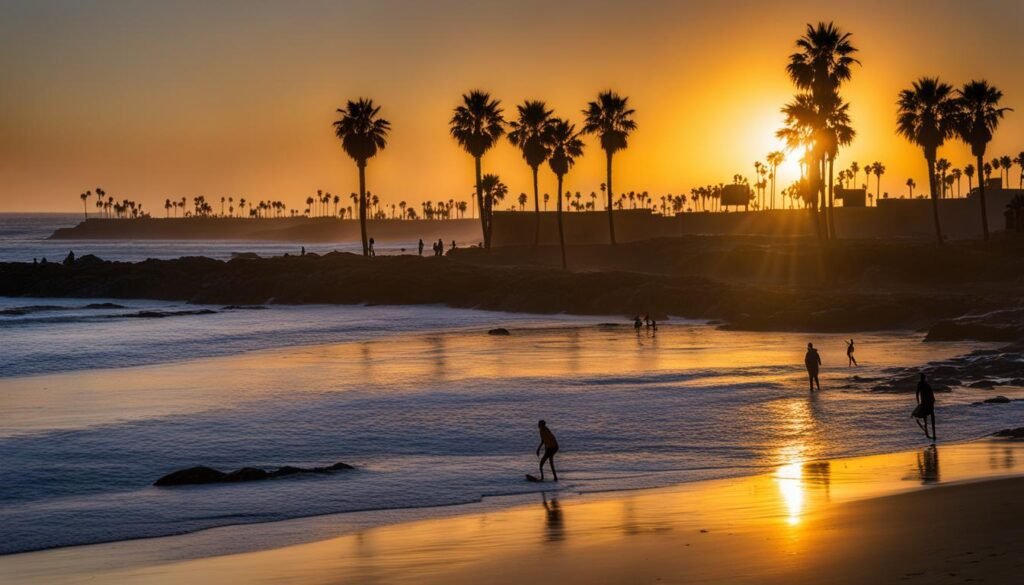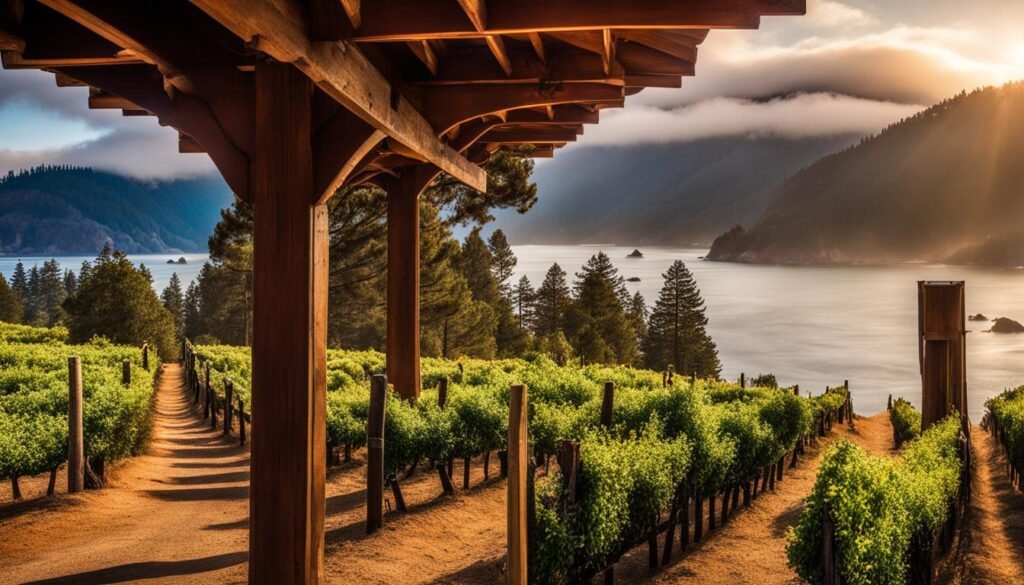Welcome to an exciting journey into the rich history and vibrant culture of California’s Native American tribes. As we dive into the fascinating world of indigenous peoples in California, we will discover their diverse communities, ancient heritage, and the modern ways in which they celebrate and preserve their traditions. From the majestic landscapes to the tribal museums and cultural centers, there is so much to explore and learn about these incredible tribes.
California’s native population was a tapestry of different nations and tribes, each with its own unique language and culture. Indian tribes such as the Karok, Maidu, Cahuilleno, Mojave, Yokuts, Pomo, Paiute, and Modoc flourished in this region, carving out peaceful lives despite the challenges they faced. The land’s topography and seclusion fostered a harmonious coexistence among these native communities.
Join me as we delve into the vibrant tapestry of California’s Native American tribes and uncover the treasures they bring to our state’s history and culture.
Key Takeaways:
- California’s Native American tribes have diverse communities and cultures.
- The state’s topography and isolation contributed to a comparatively peaceful life for indigenous peoples.
- California is home to various tribes, including the Karok, Maidu, Cahuilleno, Mojave, Yokuts, Pomo, Paiute, and Modoc.
- Exploring the tribal museums and cultural centers in California provides insights into the rich history and traditions of native tribes.
- Respecting and supporting these communities is crucial for preserving their cultural heritage.
California’s Native American Population and Heritage
California is home to the largest Native American population of any state in the United States. With approximately 1.4 million Californians identifying as full or partially American Indian and Alaskan Native, the state’s indigenous peoples have a deep-rooted connection to the land and a rich cultural heritage.
Tribal museums and cultural centers play a vital role in celebrating and preserving California’s native heritage. These institutions provide a platform for showcasing the history, living traditions, and artifacts of the diverse tribal communities that call California home. Each tribe has its own unique culture, language, and contributions to the history of the state.
California’s Native American heritage is a tapestry woven with stories, art, traditions, and customs passed down through generations. Exploring the tribal museums and cultural centers offers a glimpse into the rich tapestry of the state’s indigenous peoples, providing visitors with a deeper understanding and appreciation of their unique contributions to California’s history and culture.
| Tribal Museum or Cultural Center | Location |
|---|---|
| Autry Museum of the American West | Los Angeles |
| California Indian Museum and Cultural Center | Santa Rosa |
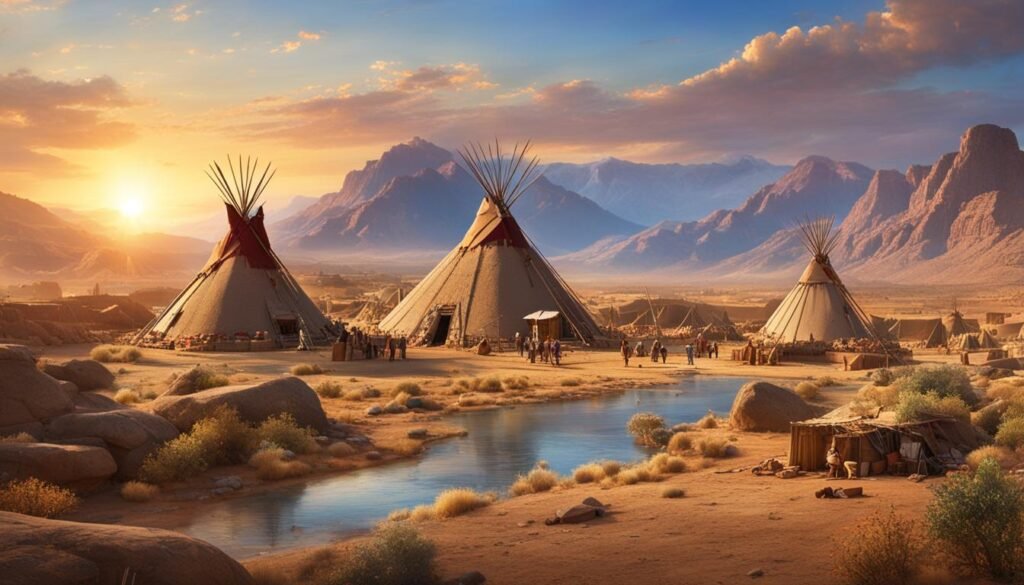  |
|
| Native American Heritage Sites and Artifacts | |
| Agua Caliente Cultural Museum | Palm Springs |
| Barona Cultural Center & Museum | San Diego County |
Exploring Tribal Museums and Cultural Centers in California
Throughout California, tribal museums and cultural centers provide an opportunity to immerse oneself in the rich indigenous heritage of the state. These institutions offer exhibits, artifacts, and educational programs that shed light on the history, traditions, and contemporary lives of Native American tribes. Some noteworthy examples include the Agua Caliente Band of Cahuilla Indians’ new cultural plaza in Palm Springs, the Barona Cultural Center & Museum in San Diego County, and the Malki Museum on the Cahuilla Indian Reservation. Additionally, cultural centers on tribal lands managed as part of national parks and forests provide insight into the tribes that called these areas home.
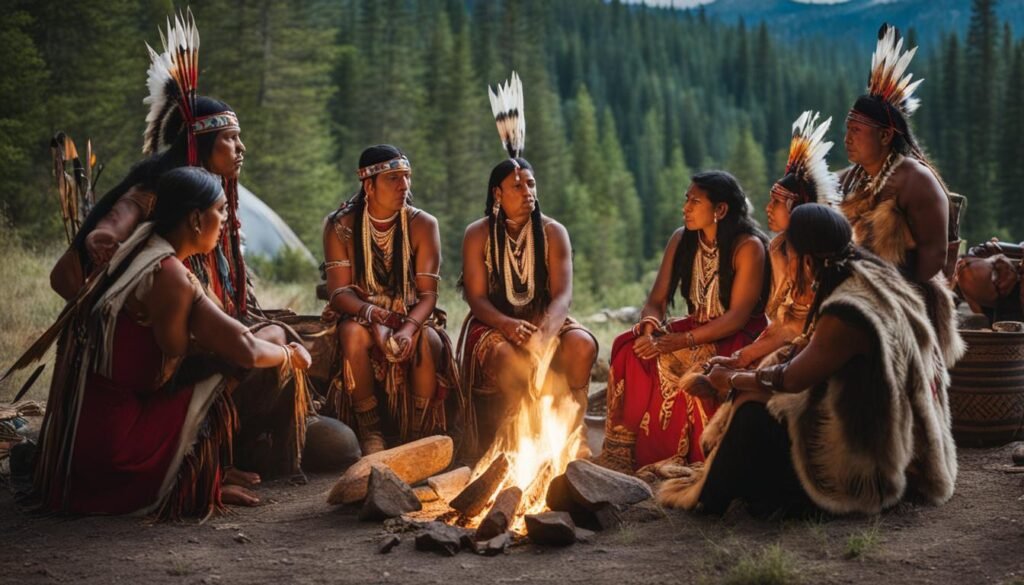

Tribal Museums and Cultural Centers in California
To truly appreciate the diversity of California’s native tribes and their remarkable culture, a visit to tribal museums and cultural centers is a must. Here are some notable institutions that offer a glimpse into the vibrant heritage of the indigenous peoples:
| Tribe | Museum/Cultural Center | Location |
|---|---|---|
| Agua Caliente Band of Cahuilla Indians | New Cultural Plaza (under construction) | Palm Springs |
| Barona Band of Mission Indians | Barona Cultural Center & Museum | San Diego County |
| Cahuilla Band of Indians | Malki Museum | Cahuilla Indian Reservation |
These are just a few examples of the numerous tribal museums and cultural centers spread across California. Each institution offers a unique perspective on the California tribal heritage and provides visitors with a chance to learn about the customs, traditions, and modern lives of indigenous communities. Whether you’re interested in archaeological artifacts, traditional artwork, or contemporary exhibitions, these cultural hubs offer a comprehensive experience that celebrates the diverse indigenous cultures that have shaped the state of California.
Experiencing Native American Culture through Pow Wows
Pow Wows are intertribal gatherings where Native Americans from different tribes come together to celebrate their shared heritage through dance, song, and storytelling. These vibrant and lively events provide a unique opportunity to witness the rich traditions and diverse cultures of California’s tribal communities. Pow Wows showcase the resilience, pride, and spirit of the indigenous peoples, leaving a lasting impression on all who attend.
California hosts several prominent Pow Wows that attract visitors from all over the world, eager to immerse themselves in the Native American experience. These gatherings offer a window into the history, customs, and traditional practices of the participating tribes. It is a chance to witness the beauty of colorful regalia, intricate dances, and rhythmic drumming that bring the stories and traditions to life.
Some of the notable Pow Wows in California include:
- Morongo Thunder & Lightning Pow Wow: Held at the Morongo Reservation in Banning, this annual event showcases the culture and heritage of the Morongo Band of Mission Indians. Visitors can enjoy traditional dances, taste authentic Native American cuisine, and explore art and craft vendors.
- Chumash Pow Wow: Located in the Santa Ynez Valley, the Chumash Pow Wow is a celebration of the Chumash people’s rich history and traditions. Attendees can witness traditional dancing, listen to Native American music, and learn about the tribe’s cultural heritage.
- Suscol Intertribal Council’s Annual Pow Wow: Taking place in Napa, this Pow Wow brings together tribes from across California and beyond. It provides an opportunity to experience a wide range of Native American traditions, including singing, drumming, and various dance styles.
Attending a Pow Wow not only offers a chance to witness the vibrancy of Native American culture but also provides an opportunity to support indigenous artisans. Many Pow Wows feature vendors selling traditional crafts, artwork, and jewelry, allowing visitors to take home a piece of Native American heritage.


Whether you are a history enthusiast, a culture lover, or simply curious about Native American traditions, experiencing a Pow Wow in California is a memorable and enlightening experience. It is a way to honor the contributions and resilience of the indigenous communities while gaining a deeper understanding and appreciation of their rich heritage.
Exploring Tribal Lands and Outdoor Adventures
California’s Native American tribes have deep-rooted connections to their traditional homelands, which extend from the majestic redwood forests in the north to the breathtaking deserts along the Mexican border. Exploring these tribal lands offers a unique opportunity to immerse oneself in the natural beauty of California while gaining a deeper understanding of indigenous cultures.
One such outdoor adventure awaits in Yurok Country, where the Yurok Tribe invites visitors to paddle in authentic redwood canoes and embark on guided jet boat tours along the pristine Klamath River. This immersive experience allows you to witness the stunning landscapes while learning about the Yurok Tribe’s rich history and traditions. As you navigate the river, you can listen to ancient stories and legends that have been passed down through generations.
Another remarkable destination is Indian Canyons, located on the land of the Agua Caliente Band of Cahuilla Indians in the picturesque Coachella Valley. This awe-inspiring landscape features palm-filled canyons, lush oases, and breathtaking vistas. Guided tours offer a glimpse into the tribe’s ancestral lands, showcasing the significance of the area and its cultural heritage. Visitors can learn about traditional practices, observe ancient rock art, and connect with the profound spirituality of the Cahuilla people.
These outdoor adventures provide an opportunity to witness the landscapes that have shaped the lives and traditions of California’s tribal nations. By engaging with the natural environment, visitors can gain a deeper appreciation for the cultural significance of these lands and the importance of preserving them for future generations.
| Destination | Tribe | Experience |
|---|---|---|
| Yurok Country | Yurok Tribe | Paddle in authentic redwood canoes and take guided jet boat tours along the Klamath River |
| Indian Canyons | Agua Caliente Band of Cahuilla Indians | Explore palm-filled canyons, oases, and ancient rock art while learning about the tribe’s ancestral lands |
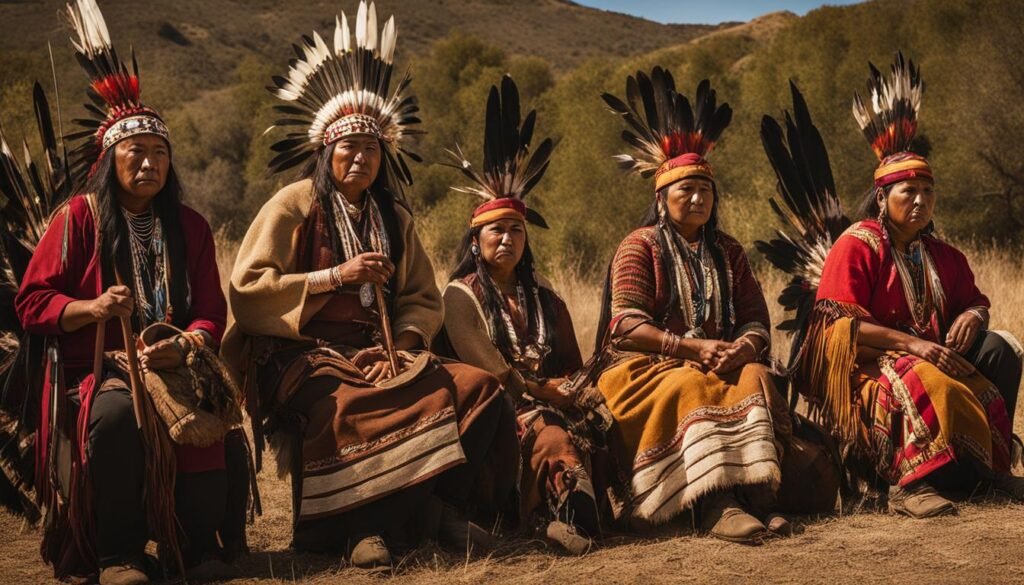

Yurok Country: Paddle in the Presence of Redwoods
Yurok Country, nestled amidst the towering redwoods of Northern California, offers a truly enchanting experience. As you paddle in authentic redwood canoes along the Klamath River, you’ll be surrounded by the majestic beauty of nature. The Yurok Tribe’s guided jet boat tours provide a deeper understanding of their rich cultural heritage, sharing stories passed down through generations. This adventure allows you to connect with the land and learn about the traditional way of life of the Yurok people.
Indian Canyons: A Journey through Time
Indian Canyons, located in the Coachella Valley, holds great spiritual and cultural significance for the Agua Caliente Band of Cahuilla Indians. Guided tours through this breathtaking landscape offer an immersive experience where you can explore palm-filled canyons, discover ancient rock art, and learn about the tribe’s ancestral lands. As you walk in the footsteps of the Cahuilla people, you’ll gain a profound appreciation for their deep connection to the land and the ongoing preservation of their heritage.
Preserving Ancient Petroglyphs and Cultural Artifacts
California’s diverse habitats and ancient settlements have left behind a rich legacy of petroglyphs, rock art, and cultural artifacts. These remnants of pre-Columbian California offer a fascinating glimpse into the lives and cultures of the indigenous Californians who inhabited the region for thousands of years.
Ancient people in California created over 100,000 petroglyphs, which are rock carvings that portray various aspects of their lives. These intricate carvings depict humans, animals, and abstract shapes, providing a visual record of the traditions and beliefs of indigenous Californians.
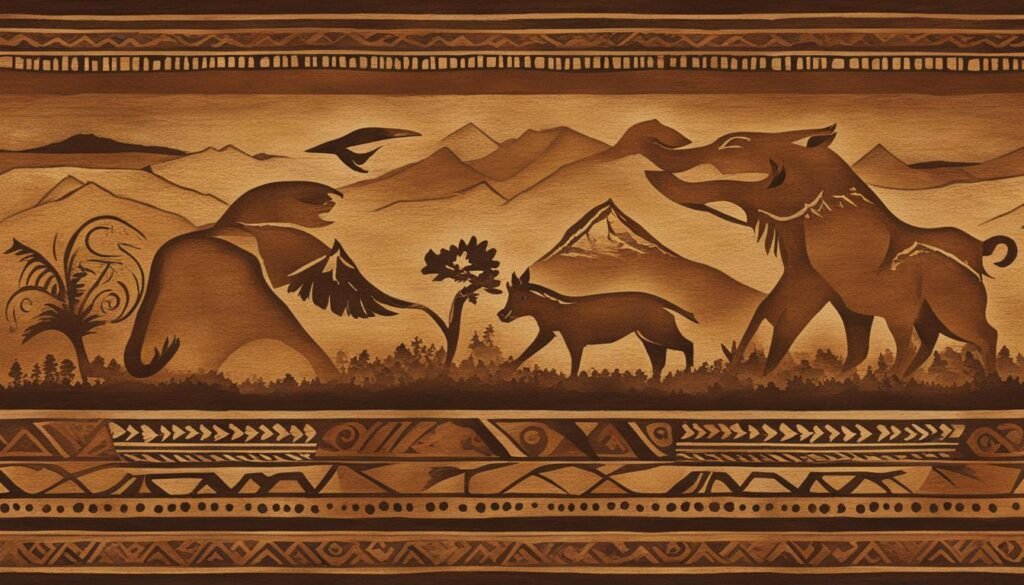

For tribes such as the Chumash and Cahuilla, cultural artifacts held deep significance. These tribes used items like giant clam shells as a form of currency, reflecting the ingenuity and resourcefulness of indigenous Californians.
Preserving and protecting these cultural artifacts is crucial for understanding and appreciating the ancient history of California. By safeguarding these remnants of the past, we can honor the indigenous peoples and their contributions to the state’s heritage.
Importance of Preservation
The preservation of ancient petroglyphs and cultural artifacts serves several essential purposes:
- Historical Documentation: These artifacts provide vital evidence of the rich indigenous history in California, offering insights into the traditions, customs, and daily lives of the native populations.
- Cultural Heritage: Preserving these artifacts helps to honor the indigenous cultures and their enduring legacies, ensuring that future generations can appreciate and learn from their heritage.
- Education and Research: These artifacts serve as valuable resources for researchers, archaeologists, and scholars, allowing them to deepen their understanding of pre-Columbian California and contribute to archaeological knowledge.
Preservation Efforts
Various organizations, tribal communities, and government agencies are working tirelessly to preserve and protect California’s ancient petroglyphs and cultural artifacts. These efforts involve:
- Conservation Measures: Implementing conservation methods to prevent further deterioration of petroglyphs, such as placing protective barriers or limiting public access to sensitive sites.
- Community Engagement: Involving tribal communities in the preservation process, ensuring their valuable insights and traditional knowledge inform decision-making.
- Education and Awareness: Raising awareness among the general public about the importance of preserving these artifacts and the need to respect and protect indigenous cultural heritage.
Preserving Indigenous Name for California
Indigenous peoples of California had various names for the land they called home. For instance, the Ohlone people referred to a region around the San Francisco Bay Area as “Epirus” or “Raven Place.” The preservation of these indigenous names is essential for recognizing and honoring the historical perspective of the native Californians.
| Indigenous Name | Translation | Tribes |
|---|---|---|
| Allyenem | Land of the Big-Eared People | Salinan |
| Tuyshtak | The Place Where the Sun Sets | Tongva |
| Ushabti | Place of Good Food | Yokuts |
Preserving the indigenous name for California alongside the physical artifacts ensures a comprehensive understanding of the state’s history and its deep-rooted connection to the indigenous peoples who were the original stewards of the land.
Living a Modern Life while Embracing Tribal Heritage
Despite the challenges faced by Native Americans, many tribal members continue to live on reservations, preserving their indigenous identity while navigating the complexities of the modern world. Through the guidance of elders, who play a crucial role in passing down traditional knowledge, tribal communities strive to maintain cultural practices that have been cherished for generations.
Elders provide invaluable wisdom and teachings, passing on stories, tribal dances, and ceremonies that reflect the rich heritage of their people. These cultural practices serve as a powerful link to the past, connecting present-day Native Californians with their indigenous roots and allowing traditions to thrive.
For instance, the Cahto Tribe exemplifies the commitment to ancestral traditions by organizing an annual pilgrimage to the coast, following the footsteps of their forebears. This pilgrimage not only honors their ancestors but also serves as a way to fish and gather seaweed, just as their predecessors did. Through acts like these, indigenous communities in California maintain a strong connection to their history and the land that sustained their way of life.
As Native Californians embrace the opportunities and challenges of the modern era, they strive to find a delicate balance between preserving their heritage and embracing the present. This balance allows for the continuation of their rich cultural legacy, ensuring that future generations will inherit the knowledge, traditions, and profound connection to the land that define their unique identity.
Promoting Cultural Understanding and Respect
When visiting tribal lands and exploring Native American culture in California, it is essential to approach these experiences with respect and a genuine desire to learn. Recognizing the historical injustices and ongoing challenges faced by indigenous communities is crucial in building meaningful connections and fostering cultural understanding.
One way to show support and engage with Native American heritage is by visiting tribal museums, cultural centers, and events. These institutions offer educational opportunities to learn about the rich history of California’s tribes, their traditions, and their contributions to the state’s cultural fabric.
Furthermore, attending Pow Wows is an excellent way to witness the vibrancy and diversity of California’s tribal communities. Pow Wows are intertribal gatherings where dance, song, and storytelling take center stage. By participating in these events, visitors can immerse themselves in the traditions and customs of Native American tribes while supporting indigenous artisans and performers.
To further promote cultural understanding and respect, it is essential to recognize the significance of California’s tribal governments. Native American tribes have their own sovereign governments, which play a crucial role in preserving their heritage, advocating for their communities, and managing tribal resources. Supporting and respecting tribal governments is an integral part of recognizing the rights and autonomy of Native American tribes in California.
To sum up, by approaching Native American culture with respect, visiting tribal institutions, participating in Pow Wows, and acknowledging the significance of tribal governments, we can foster cultural understanding and support the continued preservation of California’s rich indigenous heritage.
Conclusion
California’s Native American history is a tapestry woven with the vibrant traditions and rich cultures of the state’s indigenous tribes. From the earliest settlers who crossed the Bering Straits to the diverse tribal communities that thrive today, these native peoples have shaped the identity of California.
Exploring this fascinating history can be a journey of discovery. From visiting tribal museums and cultural centers that showcase the artifacts and living traditions of different tribal communities to experiencing the vibrant energy of Pow Wows where dance, song, and storytelling bring together tribes from across the state, there are countless ways to immerse yourself in California’s native heritage.
By supporting tribal institutions and events, visitors play a vital role in preserving and celebrating the legacy of Native American culture. Through these actions, we can ensure that the rich history of California’s tribes, their unique contributions, and the wisdom of their ancestors continue to be cherished, respected, and passed down for generations to come.
FAQ
Who were the earliest inhabitants of California?
The earliest Californians were adventurous Asians who made their way across the Bering Straits to Alaska thousands of years ago.
Which tribes were present in California?
California’s native population was diverse and included tribes such as the Karok, Maidu, Cahuilleno, Mojave, Yokuts, Pomo, Paiute, and Modoc.
How many Native Americans are there in California?
California has the largest Native American population of any state, with approximately 1.4 million Californians identifying as full or partially American Indian and Alaskan Native.
What can I explore at tribal museums and cultural centers in California?
Tribal museums and cultural centers in California showcase the history, living traditions, and artifacts of different tribal communities.
What are Pow Wows?
Pow Wows are intertribal gatherings where Native Americans from different tribes come together to celebrate their shared heritage through dance, song, and storytelling.
What are some prominent Pow Wows in California?
California hosts several prominent Pow Wows, such as the Morongo Thunder & Lightning Pow Wow, the Chumash Pow Wow, and the Suscol Intertribal Council’s Annual Pow Wow.
How can I experience tribal lands in California?
Visiting tribal lands offers a unique way to experience the state’s natural beauty and learn about indigenous cultures.
What are some examples of ancient artifacts in California?
California’s diverse habitats and ancient settlements have left behind a rich legacy of petroglyphs, rock art, and cultural artifacts.
How do Native Americans in California maintain their heritage?
Native American communities in California strive to balance the preservation of their heritage with the realities of the modern world, with significant contributions from tribal elders.
How can I show respect and foster cultural understanding?
It is important to approach visits to tribal lands and interactions with Native American culture with respect and a willingness to learn.







